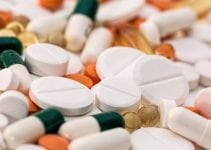
Pregnancy brings about a lot of changes. While the growing bump may be the change that gets a lot of attention, your breasts are changing on their own too.
Hormones are responsible for breast changes during pregnancy but for a good reason: they are preparing your girls to be the food source for your child. Breast milk is all that your baby will feed on for months, so it’s important to prepare them as early as possible.
Breast changes during pregnancy
Estrogen, the hormone responsible for your breasts appearing during puberty, is also responsible for preparing it for motherhood. The milk ducts in your breasts are growing to provide the milk your baby needs.
The veins in your breasts will also be more noticeable because of the increased blood supply.
Other than the growth and enlargement of breasts along with the visibility of veins, there are other changes to be expected, including:
- Tenderness and hypersensitivity
- Darkening of nipples and areolas
- Leaking of colostrum, a thick yellowish substance
- Bumpier areolas because the glands called Montgomery’s tubercles become raised.
These may be the expected changes, but every woman experiences changes differently. While some may go through a squirting period, some may not even see a whole lot of differences.
Whichever the case, it’s always best to know what to expect with your breasts during pregnancy. That way, you can avoid any surprises.
Let’s look more closely at the changes your breast will experience during pregnancy and how you can handle them:
Bigger breasts
Whether you like it or not, this will happen. Changes will start to present themselves during the first three months of pregnancy.
Why does it happen? Fat is building up, and milk glands are increasing in size.
At six weeks pregnant, you will notice that your breasts have become larger by a cup, maybe even more. By the time you’re nine months pregnant, your breasts will be about two pounds heavier.
This is one of the changes that are easy to deal with. Since there is an increase in breast size, you will need a bra that can accommodate your enlarged breasts.
But it isn’t just about size; you also have to think about it being able to support the increased weight. With that in mind, here are some tips for finding the right bra:
- Find one with a thick band under the cups and stay away from underwire bras
- Make sure to pick a bra with wide shoulder straps.
- Ensure that the bra you choose is easily adjustable.
- Choose a bra made out of cotton because it allows the skin to breathe.
Some good choices that fit the criteria listed include a cotton sports bra or maternity bra. You can even consider a pregnancy sleep bra to provide the support your breasts need while you sleep.
It’s also important to keep in mind that your breasts will undergo changes throughout the nine-month journey. As such, this requires a change of bras.
Breast tenderness
The tenderness of breasts is nothing new to a woman. It’s something that is experienced during the menstrual cycle.
While you won’t get your period while pregnant, this doesn’t mean an end to sore breasts. In fact, it’s the first sign of pregnancy that most women notice.
But why should your breasts be tender during pregnancy? That’s because of the increased blood supply coupled with the growth of milk ducts.
This change will have a different effect on women. Some will find the increases sensitivity great during sex while others will deem it uncomfortable.
With breast tenderness comes some hard lumps. While this is enough to cause panic, the lumps are mostly caused by clogged milk ducts.
It will take a few days for the ducts to clear up with the help of a warm compress, a bath, or a massage. But you should call your doctor if soreness is accompanied by feeling achy and feverish as the ducts may have become infected.
It’s also understandable to be concerned about breast cancer, but keep in mind that it’s rare for women under the age of 35. In case you are over 35 and want to get pregnant, it’s best to see a doctor about going through breast cancer screening.
Colostrum leakage
Colostrum is pre-milk and is most often seen in the clothes of pregnant women. It is sweet and watery and may appear thick and yellow during the first and third trimester.
The liquid eventually turns pale and colorless in later months and serves as your baby’s protection against disease and infection during the first few days.
Colostrum is rich in protein and antibodies, and it also contains less fat and sugar than mature milk produced after delivery.
Leaking colostrums is normal as it’s finding a dried variety on your nipples. Some women don’t even notice anything different.
All the scenarios above are perfectly normal as discharge can occur at any time. It may even come out during a massage or when you are aroused sexually.
In case you are worried about leaking colostrums, wear breast pads that are disposable or washable. But also make sure to air dry your breasts every day as well as after taking a shower.
Nipple changes
Your nipples also change during pregnancy. There’s a simple reason behind it: to make it easier for your baby to suck on it.
Throughout pregnancy, your nipples become bigger and more defined. They will also stick out more than they did before you were with child.
The areolas also grow along with the nipples. They get darker and bumpier; the latter caused by raised bumps called Montgomery’s tubercles.
Montgomery’s tubercles are small glands responsible for producing an oily substance that prevents the nipples and areolas from cracking or drying out during pregnancy and when breastfeeding.
Knowing that, it’s best not to apply soap on your nipples and areolas directly. Doing so keeps the oil and prevents the skin from drying out.
Your breast changes throughout pregnancy and knowing what to expect will keep you from being greeted with surprises.



